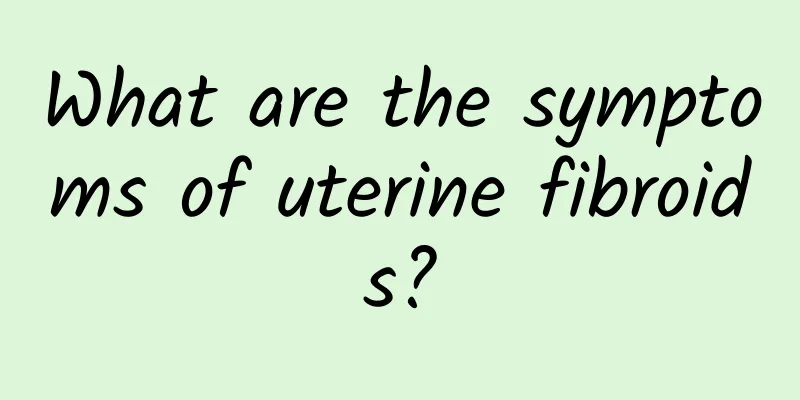What are the symptoms of uterine fibroids?

|
The uterus is a fertile place that produces menstrual blood and nurtures the growth and development of the fetus. It is shaped like an inverted pear. The uterine wall is thick and can be divided into three layers: the outer layer is the serosal layer, the middle layer is the muscular layer, and the innermost layer is the endometrium. The endometrium is affected by ovarian hormones and can undergo periodic changes and prepare for the implantation and development of the fertilized egg; if pregnancy does not occur, it will fall off once a month and form menstruation and be discharged. However, due to the influence of certain factors, such as excessively high estrogen levels, the intervention of certain growth factors, etc., lumps and bumps can grow on the uterine wall, which are often called uterine fibroids. Let our experts briefly introduce the symptoms of uterine fibroids to you, hoping to be helpful to you! What are the symptoms of uterine fibroids? Expert introduction: 1. Menstrual changes: The most common symptom is shortened menstrual cycle, increased menstrual flow, prolonged menstrual period, irregular vaginal bleeding, etc. 2. Abdominal mass: The abdomen is swollen, a mass can be felt in the lower abdomen, and there is a feeling of falling. 3. Increased leucorrhea: Increased leucorrhea, sometimes with a large amount of purulent and bloody discharge and necrotic tissue discharge with a foul odor. 4. Pain: Generally, patients do not have abdominal pain, but often have lower abdominal distension, back pain, etc. When the pedicle of a subserosal fibroid is twisted, acute abdominal pain may occur. When the fibroid turns red, the abdominal pain is severe and accompanied by fever. 5. Compression symptoms: When the fibroids grow forward or backward, they can compress the bladder, urethra or rectum, causing frequent urination, dysuria, urinary retention or constipation. When the fibroids grow to both sides, they form broad ligament fibroids, which can compress the ureter and cause hydroureter or hydronephrosis; if they compress the pelvic blood vessels and lymphatic vessels, they can cause lower limb edema. The above is a brief introduction of the symptoms of uterine fibroids by experts. I believe you already know them. If you have any questions about uterine fibroids, please consult our online experts. We will serve you wholeheartedly! Uterine fibroids: http://www..com.cn/fuke/zgjl/ |
<<: Can malignant ovarian cysts still be treated surgically?
>>: Can ovarian cyst surgery treat its complications?
Recommend
What is the cause of vulvar itching and leucorrhea?
Vulvar itching and leucorrhea with curd residue m...
Criteria for determining menopause in women
During a woman's life, she will enter old age...
Obesity is closely related to uterine fibroids. A reasonable diet can treat uterine fibroids.
Is obesity related to uterine fibroids? Can a pro...
How to diagnose bacterial vaginosis
How to diagnose candidal vaginitis? This is also ...
Mid-Autumn Festival barbecue will increase blood lipids and turn blood vessels into oil pipes! Dr. Zhou Jianan: 5 tips to avoid triglyceride explosion
The Mid-Autumn Festival is coming, and barbecue i...
What should women eat when they have uterine fibroids?
What should women eat if they have uterine fibroi...
Lai Qingde personally watched the pig farm insist on zero detection of clenbuterol
On the 20th, Tainan Mayor Lai Ching-te visited th...
Introduction to the three main treatment methods for uterine fibroids
The treatment of uterine fibroids is a matter of ...
Health food advertisements violate regulations and improve cardiovascular health first
Illegal food advertisements are everywhere. The s...
Introduction to the causes of hyperprolactinemia
Hyperprolactinemia is a disease caused by abnorma...
How to take care of chocolate cysts?
Chocolate cyst is one of the gynecological diseas...
How to treat functional uterine bleeding
Functional uterine bleeding requires a suitable t...
Aluminum in food harms reproductive system. Health Department to revise additive standards
In order to protect people's food safety, the...
Lena: Golden Rule for Weight Loss: Lose 10kg
◇My way of playing with beauty: The part I am mos...
Does cervicitis increase the risk of infertility in women? Five things you must do to prevent cervicitis
Due to the particularity of the female body, and ...









